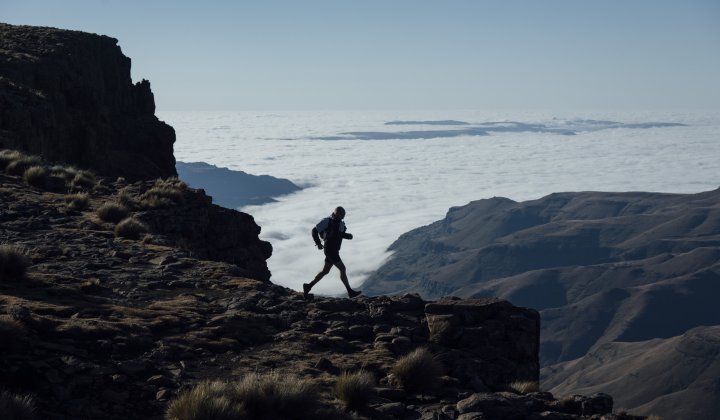By 2050, nearly 70% of humanity will live in urban areas, with much of this growth concentrated in the Global South. These cities are not just expanding; they’re transforming, innovating, and reimagining urban life for the 21st century. At the forefront of this transformation is Nzinga Biegueng Mboup, a Senegalese-Cameroonian architect and curator based in Dakar.
“The city is one of the fundamental categories for understanding contemporaneity,” Mboup says. “It’s not only in the cities where most of the world’s population lives but also the spaces that generate the imaginaries, forms of coexistence, and collective action that define a large part of our present.”
Embracing the Global South
The term “Global South” has gained prominence in recent years, uniting cities across continents under a shared identity. While some might critique it as a generic term that overlooks differences, Mboup sees value in exploring the similarities among these cities.
“I’m very much interested in the ways in which they are similar,” she explains. “We share a lot of similar climatic zones; if we look at tropical countries, they tend to be in what is considered the Global South. There have been many examples of architectural currents that try to be very specific to the climate, such as tropical modernism in Brazil, Sri Lanka, Malaysia, and West Africa.”
Beyond climate, cultural elements such as religion also create common threads. “Most of the Muslim world tends to be in the Global South,” Mboup notes. “The way in which religion dictates daily lives of cities can have echoes between different places.”
Mboup advocates for establishing a discourse that looks at architecture and urbanity through the lens of the Global South, rather than using the Global North as the standard.
“I welcome the common heritage that these cities face,” she says. “There are ways in which we can establish another form of discourse, ways of looking at architecture and urbanity through that lens.”
Challenging the suburbia model
Despite the unique realities of cities in the Global South, the American model of suburbia continues to be a powerful influence.
“Looking at the exhibition [at the Centre for Contemporary Culture in Barcelona] just reminded me how powerful this model of suburbia is because it still manages to be the standard in so many other geographies,” Mboup reflects.
In Dakar, a city that is a peninsula and the westernmost point of the African continent, the suburbia model was imported during the 1950s and 60s. “We had examples of social housing that echoed the American model of the single-unit, single-family household spread out in neighbourhoods,” she recalls. “But those no longer exist because inhabitants have modified all of these housing units.”
The reason for this transformation lies in the social fabric of Dakar. “They were a projection of a political ideal at a time when our first president wanted to create this kind of new urban class,” Mboup explains. “But they were modelled on the idea of a single-family unit, which just isn’t the reality. We live in what people call the extended family, and as the family extends, so does the housing.”
Today, what were once single-family homes have been modified into four or five-storey buildings to accommodate extended families. Yet there remains a desire for the suburbia model among the new aspiring middle class, leading to the development of gated communities replicating the same model that has shown its failures.
“We exist within this state of tension of still looking towards northern models but seeing that when we have adapted those models they have failed,” she observes. “It’s time we pay attention to other requirements that housing and urbanity need to respond to.”
Innovations from within
Mboup expresses frustration when asked what cities of the Global South can bring to the world.
“I see every day the many possibilities, lessons, and future forms of urbanity that are being created in my city and many sub-Saharan African cities,” she says. “But these lessons aren’t being taken into account by leaders or decision-makers.”
She highlights the incredible inventiveness, resilience, and adaptability of citizens. “In Dakar, we have ambulant traders [who sell items in traffic], and it’s fascinating to see what they sell,” she shares. “You could almost understand the timing of the year and everything that is going on by just looking at what they sell because it changes depending on the circumstances.”
During the Covid-19 pandemic, for instance, traders began selling masks on the streets. “They always have something that you need,” Mboup says. “It’s incredible. I don’t know how they figure it out but they adapt rapidly to change.”
Neighbourhoods in Dakar also provide a mix of uses, with commerce self-generating based on the density and needs of the inhabitants.
“There isn’t a kind of planning to say that every so-and-so corner will have a specific shop,” she explains. “But I can’t walk more than five minutes without finding a corner shop that has sprung up to provide services.”
These models show an adaptability to rapid change that Mboup believes is instructive. “On a practical level, cities of the Global North are now looking at the Global South because the climate is becoming a little bit more like ours with increasing heat waves,” she notes. “They’re interested in looking at how to deal with this condition.”
Emerging forms of living
As an architect operating in Dakar, Mboup observes new forms of living emerging in response to social and economic realities. “I’m fascinated by the way housing reflects the social and cultural realities of the country,” she says. “A lot of construction isn’t really done by architects — about 97% is built without any architects.”
Traditional forms of living in compounds with multi-generational families are now happening vertically due to the city’s constraints.
“Because Dakar is a peninsula, what used to happen on a horizontal level is now happening vertically,” she explains. “People add levels to existing houses to accommodate extended family.”
This process is happening across class levels and serves to consolidate social solidarity. “It makes sense to regroup the family, especially in contexts where we deal with inflation and economic crises,” Mboup notes. “People plan for the future by building houses with foundations that can welcome more levels.”
This incremental building adapts to the economic model where people don’t have access to loans and rely on their own means. “They do it little by little, and people find sometimes ingenious ways to do it,” she says. “As architects trained in the Western paradigm, we need to look at housing very differently.”
Reconnecting with heritage
Mboup and other younger architects are also concerned with reconnecting with their heritage, particularly vernacular forms of building. “There’s a growing interest in building with earth, building with bio-based materials,” she says. “That’s quite a central part of my work.”
This movement goes beyond architecture, extending to other aspects of life. “People are also looking at food and how we can reconnect with our traditional grains and other modes of living that we’ve left aside,” she says.
By embracing these approaches, Mboup believes that buildings can better reflect the people who use them and be adapted to the climate. “It’s about finding ways to make buildings that are more sustainable and culturally relevant,” she explains.
Looking ahead
Mboup emphasises the importance of embracing the unique conditions of African cities without any inferiority complex. “In many ways, we’re already further ahead,” she says. “We should really embrace those possibilities.”
She urges decision-makers to recognise and learn from the innovations within the Global South. “We need to look at ourselves without feeling the need to emulate the North,” she says. “It’s time we pay attention to what our housing and urbanity need to respond to.”
Learn more: https://worofila.com/
The hustle economy — rethinking urban informality
Architect and curator Tau Tavengwa believes that to understand the cities of the Global South, we need to reframe our vocabulary. “I’ve just fallen in love with the word ‘hustle’,” he says. “I hate the word ‘informality’.”
For Tavengwa, “hustle” captures the spirit of improvisation and ingenuity that characterises these cities. “If you talk about hustle, it’s about improvisation,” he explains. “Everything we’re talking about is hustle.”
He argues that using the term “informality” often carries negative connotations, whereas “hustle” acknowledges the creativity and adaptability of people navigating complex urban environments. “We need to describe the spirit and sense of improvisation,” he emphasises.
By embracing the “hustle economy”, we can better appreciate the innovative ways in which residents of the Global South create solutions that meet their needs, often without formal recognition or support.
Rethinking infrastructure — lessons from Harare
In Harare, Zimbabwe, innovative approaches to infrastructure are emerging in response to pressing social needs. Tau Tavengwa recounts a story from 2008, when massive evictions left 1.2 million people homeless.
“A state psychiatrist sought to provide mental health support to these traumatised communities,” Tavengwa explains. “He found that middle-aged women, the ‘aunties’, hold the psyche of entire communities together.”
Instead of building costly facilities, they set up park benches where these women could offer support. “If you saw this old lady at a bench, you could sit and have conversations,” he says. “They provided an essential service without needing to build hospitals.”
This approach illustrates how infrastructure doesn’t always have to be about physical structures. “It’s a proposition of how you can think of infrastructure in a very different way,” Tavengwa notes. “There are similar interventions in other places.”
By reimagining what infrastructure can be, cities can address urgent needs in resourceful and community-driven ways.
Learn more by watching Dixon Chibanda’s “Why I train grandmothers to treat depression” at TED.com.











